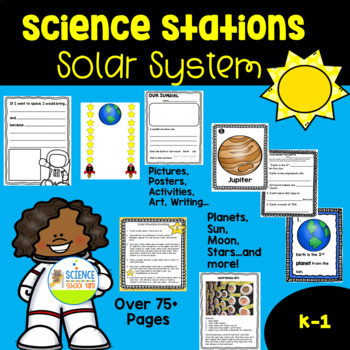Apollo 11 was the spaceflight that landed the first two humans into space. Commander Neil Armstrong and lunar module pilot Buzz Aldrin, both American. They landed the Apollo Lunar Module Eagle on July 20, 1969! How do we use this to springboard a great science and STEM lesson? Here are 10 ways to engage students in this celebration!
Idea 1: Virtual Race to the Moon
Virtual Race To The Moon is for you...the teacher! Keeping yourself healthy and your students healthy is important! Check out this challenge!
Idea 2: Show the Lunar Landing
Have your students watch the moon landing. Littles can start with Astronauts can, have, are... Bigs can discuss why some thought it was a hoax or they can even take a poll to see who would want to fly to space and why.
Idea 3: Read a Great Book
I love using the book One Giant Leap written by Robert Burleigh.
 |
| Find that book here! |
 |
| Find this book here! |
Idea 4: Do a STEM activity
I love using toilet paper tubes to have the students create the moon landing! We use the tubes as a ramp system to get from Earth(a picture representation taped on the wall) to the moon (another picture) They must have three bends, and land safely in a bucket or on a tray. I use pompoms or ping pong balls as the spacecraft.
Idea 5: Oreo Moon Phases
I love having my older students (bigs) create moon phase posters using Oreo cookies. They love this project! Gail Gibbons has a great book, Moon Phases that you can use, but I just love the rap to go with this project!
I use cheap dollar store cookies because they don't get to eat them and it saves some money. I give them plastic knives so that they can scrape off the frosting as well. I want them to take what they know and create a representation and then we analyze if their model is correct and if they can explain how the cycle works.
Idea 6: Moon Crater Painting
Very simply, I cut out grey paper circles. I set out trays and white paint. We used circular objects to make the craters. You can use bottle tops like we did. This is a quick and fun little follow up on what craters on the moon look like and how they are made. We used our sentence strips to show what we know.
Idea 7: Moon Crater Ball Drop
I love this activity for my littles. Grab black paper and a plate. Add flour to the plate. Make sure you have plenty of floor covering so that you don't make too much of a mess. Grab different sized balls that can create different sized craters and you are good to go! Each ball represents a different sized meteors and asteroids that hit the surface of the moon and left a crater.
Idea 8: Moon Phase Games
I made this free resource for you to help with the phases of the moon! Grab your free copy here ! Use it as a memory game, a review, or even for an anchor chart!
Want to find these ideas, sheets, activities, and a few bonus activities all in one place ready for you to just print and go? Check out my moon phase packs by following this link: Moon Phase Science Pack and STEM Connections

Because I teach both primary and intermediate, I have packs for both age groups! Check out my pack I use with my K-2nd graders! You can find that pack HERE!
I love you to the moon and back! Let's make Science and STEM child's play!
Some of the links are affiliated links, meaning in no additional cost to you, I will earn a commission if you click through to purchase.















No comments